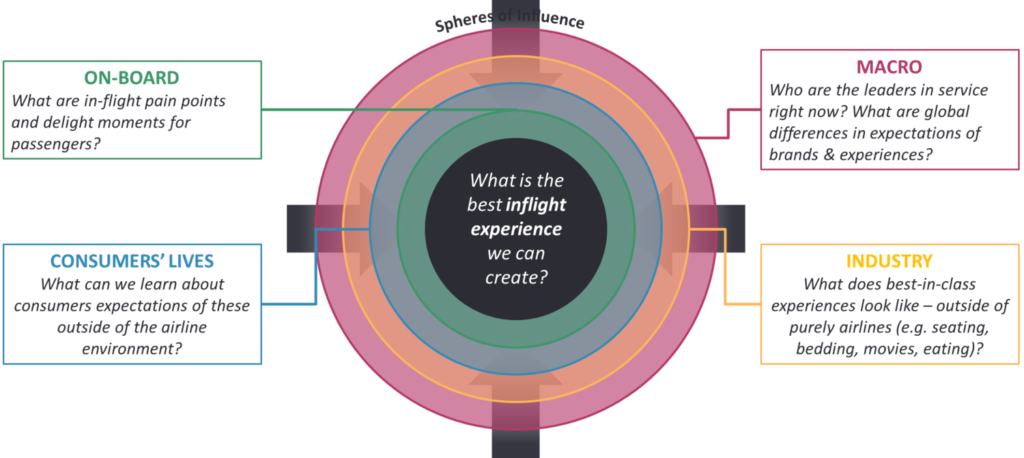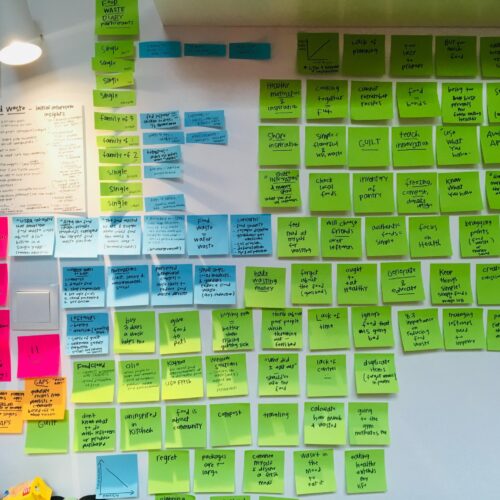At Kadence, one of the key traits that we look to develop in all of our team members, is the ability to think creatively. The term ‘creativity’ is often misunderstood. It can be seen by some as a trait that only ‘artistic’ people possess – and not something to improve over time. Whilst it is true that some people perhaps have a more natural leaning towards creative outputs (and why we employ dedicated designers to help with the visual appeal of our output) at its root, thinking creatively is of vital importance for the growth of a business.
If you have not read Ed Catmull’s book ‘Creativity Inc’ – Overcoming the Unseen Forces That Stand in the Way of True Inspiration – I would highly recommend it. Firstly, it is a fascinating story about how a person who dreamed of becoming an animator, but could not draw, ends up as the President of Walt Disney Studios and Pixar! However, more importantly is that Catmull brings forward usable, relatable stories of how they could foster an environment of creative thinking. “For me, creativity includes problem-solving. That’s the broad definition of it”.
Thinking outside the box
Whilst it may be easy to associate creativity with a movie studio – much of the lessons learned are hugely practical for any business (or team within a business) that are tasked to ‘think outside the box’ to solve a problem. For me, the largest problem with the term ‘thinking outside the box’ is that it is a cliché, with no clear meaning or benefit derived from doing so. Sometimes, thinking ‘within the box’ is effective. By the purest definition, it was ‘thinking inside’ that you got you to where you are today. ‘The box’ is often a negative, the norm, staying with what you know, how a company operates, and there is often nothing wrong with optimizing this as a starting point.
However, there does come a time where you need to look for new ideas and inspiration. You could Google ‘how to think outside the box’ but there are many, many results that come up – and whilst some claim to give you advice (Forbes for example) it is not as easy as that to implement.
Get regular insights
Keep up to date with the latest insights from our research as well as all our company news in our free monthly newsletter.

Using research as a tool to think creatively
This is where research companies can play a pivotal role … not just by collecting data, but by helping you think about a problem differently – creatively!
At Kadence, we look to help companies make sure that they are focused on the impact that research can have – and we work creatively to be able to do that. Our starting point is always making sure that we are thinking about the business goal. A great example of this (and an interesting read regardless) is in HBR’s article on ‘Are you Solving the Right Problems’. The author describes framing a problem, an elevator being too slow in an office building – with disgruntled tenants – with the list of potential solutions geared up around making it faster (new lift shaft, upgrade motors, change algorithms etc). However, the problem is really that ‘the wait for the elevator is annoying’. This then presents a much different list of potential solutions (provide entertainment, TV screens, mirrors to check appearance, etc) – all of which are much cheaper than construction of new lift shaft!
This correct framing of the problem brings us back to creativity as a tool. If we are tasked with thinking ‘creatively’ about a problem, how do we do so. Particularly if we have been ‘in the box’ for a long time. The rest of the HBR article continues with suggested ways of re-framing the problem, but at Kadence – we go searching outside the box!
Harnessing ‘spheres to influence ‘ to find new solutions
We use a term called ‘spheres of influence’ to assess what are the associated, but distinct industries, or experts that might be able to give an opinion on the problem or potential solution. We draw this up with our clients, then we go looking for our creative solutions. For example, when working with an airline, whose goal it is to create the best in-flight experience possible we would create a map of the ‘spheres’

By looking at the spheres of influence on a brand, and by speaking to people who have a viewpoint on this (e.g. for an airline, understanding views on what makes best in class bedding or a best in class luxury car seat etc) we can reframe the problems creatively and therefore focus our proposed solutions on something that is likely to be more relevant.
Increasing creativity in your organisation
As a first step, you could always look to assess how creative you, or your teams are. There is a test called the Torrence Test of Creative Thinking (which we recently carried out on our team in Kadence) that allows you to assess how creative individuals are. If you do find that you or your team score low on this, don’t fret. Either give Ed Catmull’s book a read….or simply get in touch with Kadence*
*ideally you should do both




 Senior Marketing Executive
Senior Marketing Executive Sales & Marketing
Sales & Marketing General Manager PR -Internal Communications & Government Affairs
General Manager PR -Internal Communications & Government Affairs Vital Strategies
Vital Strategies
 Customer Intelligence Director
Customer Intelligence Director